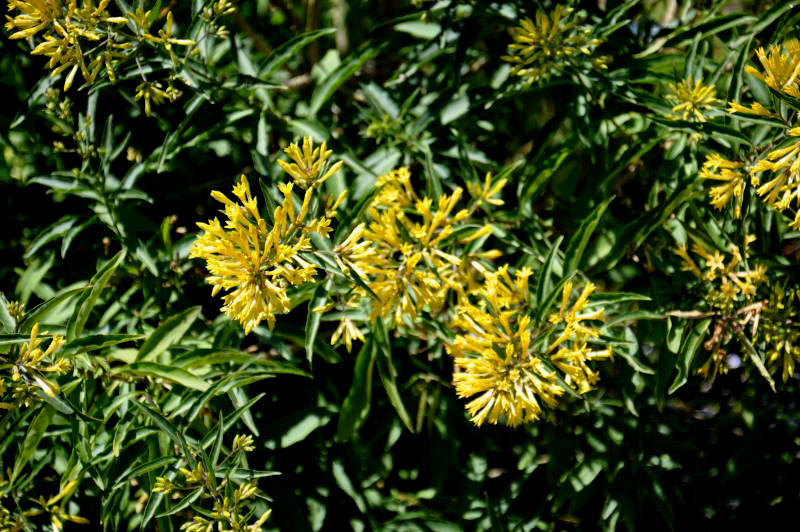Chilean Cestrum (Cestrum parqui)
Chilean Cestrum forms an upright, straggly, woody deciduous or semi-evergreen shrub 2 to 3 metres high with one or more brittle green stems. The light-green, shiny leaves give off a foul rubbery smell when crushed. From late spring to autumn the plant has sprays of small, fragrant, tubular yellow-green flowers on the ends of the stems. These are followed by clusters of small, black egg shaped berries during summer to autumn.
